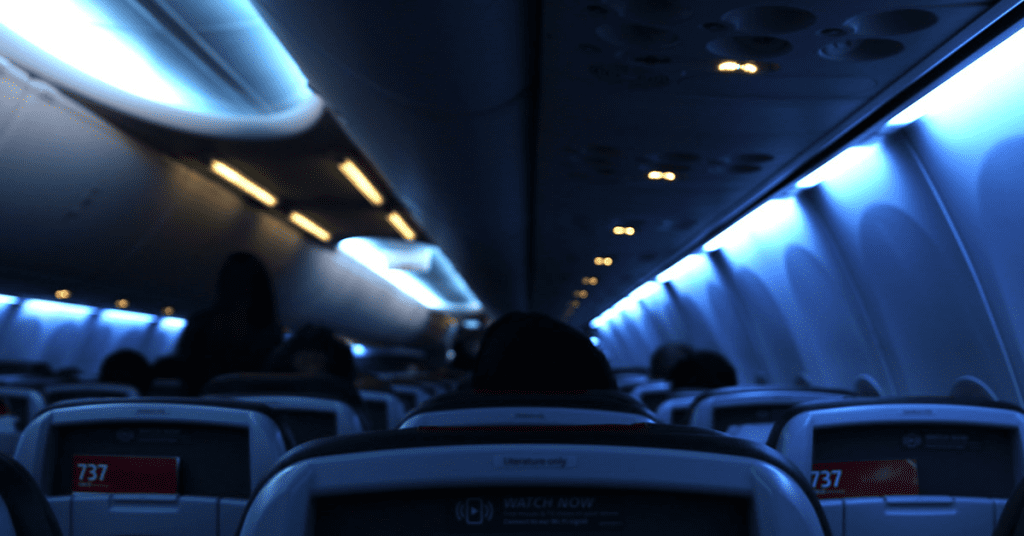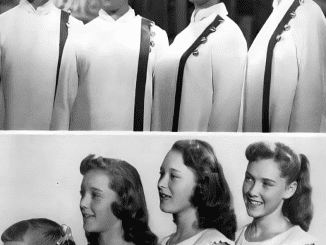If you’ve flown before, you’ve probably noticed that the cabin lights dim during takeoff and landing. While it might seem like a way to encourage passengers to rest or sleep, the real reason has nothing to do with comfort. This practice is actually a crucial safety measure designed to protect passengers and crew in the event of an emergency. Let’s explore why airline crews dim the cabin lights and what it means for your safety.
Safety Precaution: Preparing Your Eyes for Darkness

The primary reason airline crews dim the cabin lights during takeoff and landing is to help your eyes adjust to darkness. In the event of an emergency evacuation, especially during nighttime or low-light conditions, having your eyes already accustomed to the dark is essential. Dan Bubb, a former airline pilot and associate professor at the University of Nevada, Las Vegas, explains, “Dimming the lights during dawn, dusk, and night flights ensures that passengers and crew are prepared for any unexpected evacuation where quick movement through the aircraft is necessary.”
Your eyes take around 5 to 10 minutes to fully adjust to changes in light. By dimming the cabin lights, airlines are giving your eyes a head start in adjusting, which could be critical in the event of a sudden emergency.
Critical Phases of Flight: When Dimming Matters Most
Takeoff and landing are the most dangerous times of any flight. According to Boeing, 21% of fatal accidents happen during takeoff and initial ascent, while 46% occur during final descent and landing. These are the times when pilots and crew are most focused on ensuring the safety of the flight, and when the plane is in what is known as a “dirty configuration”—meaning the landing gear and wing flaps are down, making the aircraft more vulnerable.
By dimming the lights, the crew ensures passengers are better prepared to evacuate in case something goes wrong. It’s a small yet vital step that can make a huge difference in an emergency situation.
Enhancing Emergency Preparedness: Seeing Your Way Out
In the rare event of an emergency, such as an evacuation, it’s essential for passengers to quickly find the emergency exits. Dimming the cabin lights makes illuminated emergency exit signs and floor path lighting more visible, which helps guide passengers to safety.
Former United Airlines flight attendant Sue Fogwell explains, “The lights are dimmed at dusk and when it’s dark outside so your eyesight can adjust, making it easier to evacuate the aircraft if necessary.” In low-light conditions, having pre-adjusted vision could mean the difference between navigating the cabin smoothly and being disoriented during an evacuation.
Other Safety Measures: Clear Pathways to Exits
In addition to dimming the cabin lights, flight attendants also ask passengers to follow a few key safety procedures during takeoff and landing. These include closing tray tables, stowing bags, and returning seats to their upright position. All of these actions ensure that the aisles and exits are clear, reducing the risk of tripping or getting blocked in an emergency.

Additionally, passengers are often asked to open their window shades during takeoff and landing. Airline pilot Patrick Smith notes, “Raising your window shade makes it easier for flight attendants to assess exterior hazards—like fire or debris—that could interfere with an emergency evacuation.” This simple step can provide vital information to the crew and improve evacuation efficiency if needed.
Conserving Energy and Enhancing Passenger Comfort
While safety is the primary reason for dimming the lights, there’s a secondary benefit as well: energy conservation. On nighttime flights, dimming the lights after takeoff helps conserve energy and creates a more comfortable atmosphere for passengers, allowing them to relax or sleep. Once the plane has reached cruising altitude, the lights are typically kept dim to promote a peaceful environment conducive to rest.
This practice also reduces glare, making the in-flight entertainment screens easier to watch and reducing overall cabin noise as passengers settle into a calmer, more relaxed state.
Why Bright Lights Aren’t Ideal During Takeoff and Landing

It’s not just about making things dark—there’s also a reason to avoid bright lights during critical phases of the flight. Bright lights can cause glare and distract both the crew and passengers, making it harder to focus in case of an emergency. Additionally, if the cabin remains brightly lit, transitioning to the darkness of an emergency exit could lead to temporary vision impairment, slowing down the evacuation process.
Dimming the lights helps create an optimal environment where passengers can transition smoothly from the cabin’s lighting to external conditions, ensuring they’re ready to act swiftly if necessary.
Final Thoughts: Dimming Lights for a Safer Flight
The next time you notice the cabin lights dimming as the plane prepares for takeoff or landing, remember that it’s more than just a routine. It’s a thoughtful safety measure designed to enhance your ability to respond quickly in the event of an emergency. By allowing your eyes to adjust to lower light levels, the airline is ensuring that you’re better prepared to see and navigate should an evacuation be required.
So, while dimming the lights might make the cabin feel more relaxing, its true purpose is far more important. It’s a key part of ensuring that every passenger has the best possible chance of safely exiting the aircraft in case of an emergency. This simple yet crucial detail, combined with other safety measures, plays a vital role in making air travel as safe as possible.


